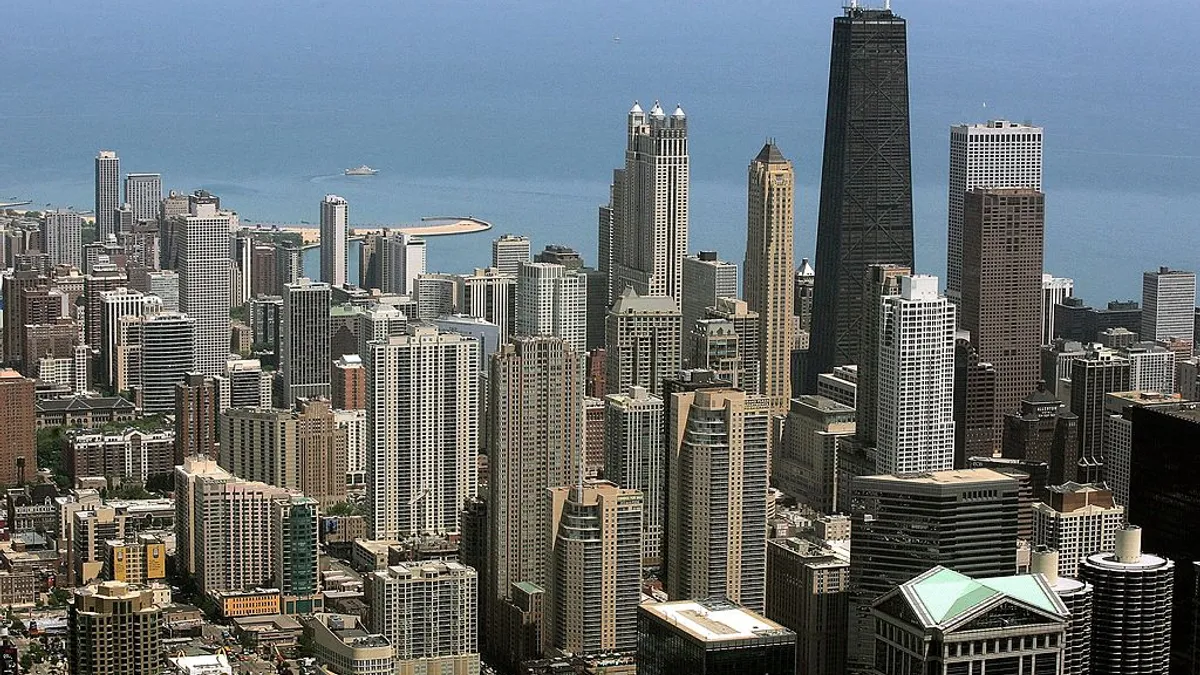Russ Carnahan represented Missouri’s 3rd District in the U.S. House of Representatives from 2005 to 2013 and is co-founder of BuildingAction, the Coalition for Sustainable Buildings. Vincent R. Sandusky is the CEO of the Sheet Metal and Air Conditioning Contractors’ National Association.
Everyone agrees that, at the very least, infrastructure includes things like roads, bridges, airports, water systems and broadband access. But after that, the definition gets a little confused. Nevertheless, there should be no doubt about one thing: Buildings are central to the nation’s infrastructure and should be included in any package approved by Congress.
The bipartisan Senate infrastructure agreement takes an important first step in recognizing that buildings are part of infrastructure, including providing $500 million for energy upgrades in schools. But there is much more that Congress can do to improve our nation’s building stock.
To suggest that buildings are not part of the “basic system” that makes our society function is to ignore the fact that people spend about 90% of their time indoors (in fact, you are most likely reading this inside a building right now). You can build all the roads, bridges and power systems you want, but without the vital and essential public buildings housing countless government functions that they connect to, those other forms of infrastructure won’t suffice to serve the national interest.
Buildings impact our quality of life in many of the same ways as other infrastructure. Like other forms of traditional infrastructure, buildings are a component of our physical, human-made landscape that facilitates people’s most fundamental needs, from housing and education to commerce and the provision of health care. And like other kinds of traditional infrastructure, buildings need to be maintained and renovated to operate at their most efficient use.
As they do for other kinds of infrastructure, the construction and renovation of buildings create jobs, and lots of them. In fact, as a 2019 BuildingAction analysis found, investments in new and retrofitted energy-efficient buildings can actually create more jobs than similar spending in other sectors.
Not only that, but as they do for the traditional forms of infrastructure, the construction and operation of buildings shapes how we tackle critical societal challenges, whether it’s climate change, recovering from the current pandemic, or preparing building systems for the next pandemic.
Buildings and the electricity needed to power and heat them together account for a larger share of greenhouse emissions than the transportation sector does. Any chance we have of reducing carbon in the atmosphere depends as much on making buildings more sustainable as it does on transitioning to cleaner cars.
Public health depends on healthy buildings, from indoor air quality to the types of materials used in making them. What’s more, research has shown that schools with better air ventilation helped reduce carbon dioxide and the spread of COVID-19 infections. If we want kids back in healthy classrooms this fall, investing to retrofit ventilation and filtration systems to promote safer schools is a must and is long overdue.
One difference between buildings and roads or bridges is that while much traditional infrastructure is publicly owned, many buildings are not. That said, every community in the nation has public buildings, from libraries and schools to state universities, community hospitals, public housing, courthouses, office buildings and more. Maintaining these structures to ensure productivity, safety and well-being is the government’s responsibility as much as it is for any highway or dam.
How we build buildings even impacts all the other kinds of infrastructure. The extent to which buildings are designed with energy-saving measures has major implications on the energy grid and its reliability. In fact, more and more buildings feature on-site renewable energy generation, which not only lessens the burden on transmission lines, but also offers the possibility of selling energy back to the grid. Even the latest innovations in transportation rely on buildings. All those electric vehicles will need to be plugged in somewhere; for many owners, that somewhere will be their homes and offices, requiring extra energy-generating capacity for the building stock.
Ultimately, the definition of infrastructure is less important to the debate over the bills than the big goals: making America more competitive, creating jobs, addressing the impacts of a changing climate, and ensuring all Americans have access to a good quality of life.
All these are agreed-upon priority energy, economic and environmental goals that can be addressed by investing in buildings. That’s why we have joined with other leaders in the building sector to send a letter to Congress today calling on it to ensure that any serious infrastructure packages include federal, state and local public buildings as a key component, joining roads, bridges, broadband and the like. Simply put, any serious infrastructure proposal will make sure we invest in these critical assets.
Creating a 21st-century transportation network, or the information superhighway of tomorrow, while letting our nation’s buildings crumble is no way to responsibly address a national infrastructure crisis, let alone build back better. Public and private buildings are a vital part of our nation’s infrastructure, which is why they must be part of the solution Congress now debates.
Contributed pieces do not reflect an editorial position by Smart Cities Dive.
Do you have an opinion on a similar issue or another topic Smart Cities Dive is covering? Submit an op-ed.



















